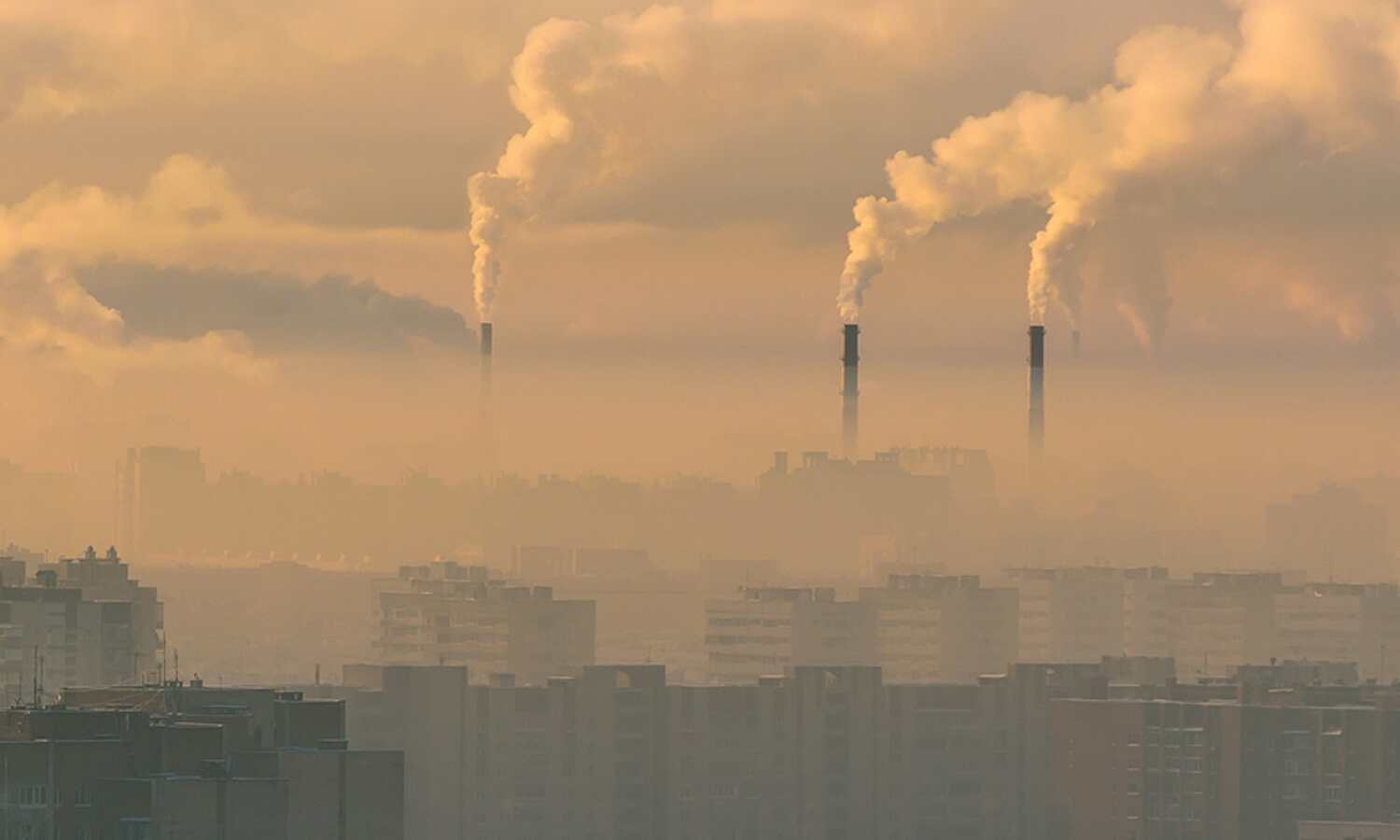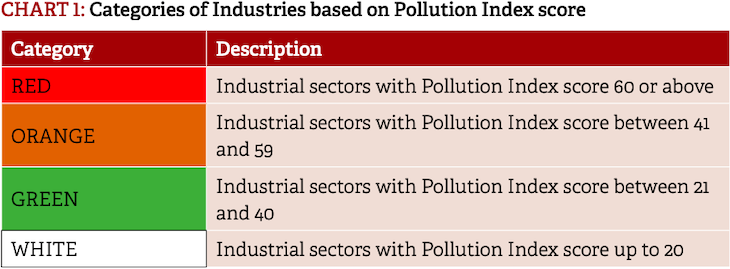Pollution Regulators Misinformed, Low On Motivation: Study

New Delhi: An acute shortage of technical experts and other staff has reduced central and state pollution regulators to mere advisory bodies, leaving them unable to enforce air quality standards, a recent study has concluded.
The Delhi-based Central Pollution Control Board (CPCB) and a network of 27 State Pollution Control Boards (SPCBs) are tasked with regulating pollution across sectors. Ten years after India established new National Ambient Air Quality Standards (NAAQS) that the pollution control boards must enforce, it recorded the worst levels of pollution ever, with the largest number of Indian cities making it onto the global list of the world's 20 most polluted. About 1.67 million Indians died due to air pollution that year. About 660 million Indians could live longer if India achieved NAAQS.
To understand the institutional and informational reasons for this failure, the Delhi-based non-profit, Centre for Chronic Disease Control (CCDC), conducted extensive interviews with officials at pollution control boards, bureaucrats, academics and environmentalists across eight cities--Lucknow, Patna, Ranchi, Raipur, Bhubaneswar, Vijayawada, Goa and Mumbai.
The study found staff shortages, increased workloads, poor understanding of the health impacts of pollution, poor coordination with related agencies and low levels of motivation and accountability among the staff.
"Besides raising issues in staffing and funds, the report discusses how pollution control boards reportedly perceive themselves as technical advisors instead of regulatory bodies," Santosh Harish, fellow at the Centre for Policy Research (CPR), a Delhi-based think-tank, told IndiaSpend. "This seems to be especially an issue with sources that come under the jurisdiction of other agencies where coordinated action is essential to make progress."
Statutes, and implementation
The Indian government launched a national plan in January 2019 to cut air pollution in the country by 20-30% by 2024. To deal with the especially high air pollution levels in the National Capital Region of Delhi and surrounding states, the Centre recently passed an ordinance to create an 18-member committee consisting of independent experts, bureaucrats and other representatives from affected states.
However, the success of any green initiative depends on the performance of the pollution control boards, the study said, adding that many of them are currently underperforming.
"While interventions that strengthen the legislative framework, such as the recent ordinance, are welcome, they will be as ineffective like all previous efforts unless the regulatory bodies that enable their implementation are strengthened with the technical and financial resources needed," said Bhargav Krishna, one of the authors of the report and an expert with Public Health Foundation of India (PHFI).
Below are the key findings of the study.
More responsibilities, limited institutional capacity
Over the last two decades, SPCBs have seen an expansion in the scope and scale of their work but not in their budgets and workforce. In its ground survey, the study found more than 50% of positions vacant in some SPCBs. Remuneration was meagre, making it hard for the board to retain talent, it found.
One of the essential tasks of the SPCBs is to conduct regular onsite pollution inspections across industries classified according to their pollution levels (see chart below). The regional offices of the SPCBs are usually tasked with this job along with several other responsibilities. Since an inspection usually requires travel, it often ends up low on the list of PCB priorities, the study found. Further, officials at all SPCBs said staff shortage was a key reason for delayed inspections.
Pointing to the lack of updated data, the study mentioned a 2008 report by a parliamentary committee that said the SPCBs of Karnataka and Maharashtra had not managed to conduct inspections even once a year. "The average inspection per industry, per year, for Maharashtra, is 0.3 (in 2008) while for Karnataka it is 0.63 times," said the study. That is, an industry is inspected, on average, about once and twice every three years, respectively, in Maharashtra and Karnataka.
The Gujarat State Pollution Control Board had inspected all the industries in the 'red category' (highest polluting industries) twice every year, but even this was unlikely to be enough to ensure year-round compliance, it said.
Not much has changed a decade later. "There is a significant imbalance in the ratio of technical and non-technical staff with a high proportion of posts left vacant," it said.

"Yes, several posts are lying empty, including technical ones, and that shortage sometimes also reflects in the boards' actions, but that situation will also improve soon," an official at the Uttar Pradesh Pollution Control Board told IndiaSpend. We asked for an official response to the study, but they insisted on anonymity, and maintained that the boards have been living up to their mandate, interacting with polluting industries and enforcing compliance despite challenges. "It is a new era of pollution regulation with several updates coming every day, and pollution boards are also calibrating themselves as per this new evolving ecosystem," they said.
Top administrators have no domain expertise
Leadership positions in SPCBs are usually held by civil servants with no expertise in science or environmental studies--necessary for comprehending issues relating to pollution and climate change. These positions are seen as administrative and not technical, the study said, adding that this indicates the extent to which the importance and scope of pollution control is underestimated.
Often, officials heading the boards also hold other government portfolios and sometimes these roles are in conflict, the study said. For example, the CPCB is dominated by government representatives and is constituted by the central government "which conflicts with the expectation of it acting as a watchdog".
One reason is that no clear qualifications are laid down for the recruitment of various members to the pollution control boards--"having special knowledge or practical experience in respect of matters relating to environmental protection" is one specification.
The 2008 parliamentary committee report had flagged the concern that under-qualified people could end up in positions of power at pollution control boards. The report--using 2001 figures--concluded that 77% of chairpersons and 55% of member secretaries across pollution control boards were not qualified to hold their positions.
"[B]ut even after the significant passage of time, this [situation] seems to have remained the same," the CCDC study said.
Low motivation, accountability
State board officials often have a diminished view of their own role and responsibility and this has shifted their perceived role from that of regulators to mere technical advisors, the study said. Many are unaware of the full scope of their responsibilities.
None of the respondents at the eight SPCBs surveyed knew the history of different pollution standards or why these were established at certain levels. The process of framing these standards was not inclusionary and state officials were simply asked to implement these, the study said.
"Whatever they give us, we have to follow," is how one state board official described his tasks. States were not even provided with standard operating procedures to implement standards. "All of this has created a feeling of detachment from the cause as well as their responsibility," the study found.
The boards do not initiate strict actions against offending industries because they feel that they do not have any real authority, the study said. One of the interviewees spoke about being told to check pollution levels in units "by way of a text message from the board".
Even when the SPCBs take legal action against polluters, compliance tends to be significantly delayed because of the costs and time involved in the legal process with civil and criminal courts struggling with a case backlog. "This disincentivizes SPCBs from taking legal action, as evident from the limited use of this particular deterrent," the study said. A regulatory framework that encourages the speedy disposal of non-compliance cases is needed to discourage offenders, the study recommended.
Poor multi-sectoral coordination
The lack of convergence and coordination between various state and central departments often means that other departments do not implement SPCB directives, the study said. Some states see SPCBs as a bureaucratic hurdle, not bodies tasked with the vital role of protecting human health and the environment.
"The state pollution control boards have to look at water, air, noise pollution as well as biomedical waste management. We directly have no control but can only ask the concerned department or authorities to try and improve upon the mitigation measures. We cannot do it for them," a state board official told a surveyor during the study.
When SPCBs have to consolidate their efforts and coordinate with various departments, including transport, police and urban local bodies, they tend to get lax about the implementation of standards, the study found.
For example, under the National Clean Air Programme (NCAP), which entails reducing air pollution by 20 to 30% by 2024, the SPCBs have created action plans for 102 non-attainment cities--cities that repeatedly violate the 2009 NAAQ standards. The plans require efforts from multiple city departments.
"What is surprising is that most of these plans do not have specific deadlines for the tasks to be completed," said the study. This results in lax implementation of action plans, which is dangerous given the grave pollution levels in non-attainment cities, it added.
These city action plans also lack legal mandate, transboundary coordination, funding, clear targets and accountability, IndiaSpend reported in August.
Little expertise in monitoring
Many interviewees spoke about their role in monitoring pollution. States do deploy their own monitoring networks beyond those established by the CPCB. But with limited technical expertise, the quality and utility of the data generated remains suspect, the study said.
For instance, the CPCB is required to visit monitoring stations, review meetings, analyse quality control and conduct training programmes for the purposes of quality assurance and quality control. But few of these tasks are carried out with the same frequency or efficacy at the state level, the study said. The calibration of monitoring devices is frequently cited as a challenge.
So, while the capacity for real-time monitoring--in the case of air pollution, for example--increases every year, gaps in data collection and erroneous readings due to poor calibration remain. For example, air quality monitors in several non-attainment cities tracked under NCAP are not even recording an ideal number of readings, showed a new dashboard launched by civil society organisations Carbon Copy and Respirer Living Sciences. This could be due to many reasons, including technical difficulties.
"With an expanding network of air quality monitoring across the country, caution needs to be taken with regard to maintenance of monitoring stations and resulting erroneous data," said the study.
Poor understanding of pollution's health impacts
The core of India's environmental laws is protecting human health, but an inadequate understanding of this as well as misinformation about the sources, distribution and impact of air pollution prevails in the SPCBs, the study found.
When asked about their understanding of the health impacts of air pollution, interviewees gave varied responses. Some showed a clear understanding of issues, others did not, and some seemed misinformed. "In a rather startling statement, a respondent casually mentioned how 'air pollution is not an alarm bell for us yet' and how the 'standards are meant for Europeans, not Indians', drawing distinctions in physiology that run contrary to established science," the study said.
The study's findings ring an alarm to improve and strengthen India's pollution regulators, experts said. "It is very important to change the status quo and strengthen the PCBs and bring in more transparency in their functioning as a regulator in controlling pollution and emission at source if we have to achieve breathable air and environment around us," Sunil Dahiya, analyst at the non-profit, Centre for Research on Energy and Clean Air (CREA), told IndiaSpend.
(Tripathi is an IndiaSpend reporting fellow.)
We welcome feedback. Please write to respond@indiaspend.org. We reserve the right to edit responses for language and grammar.


